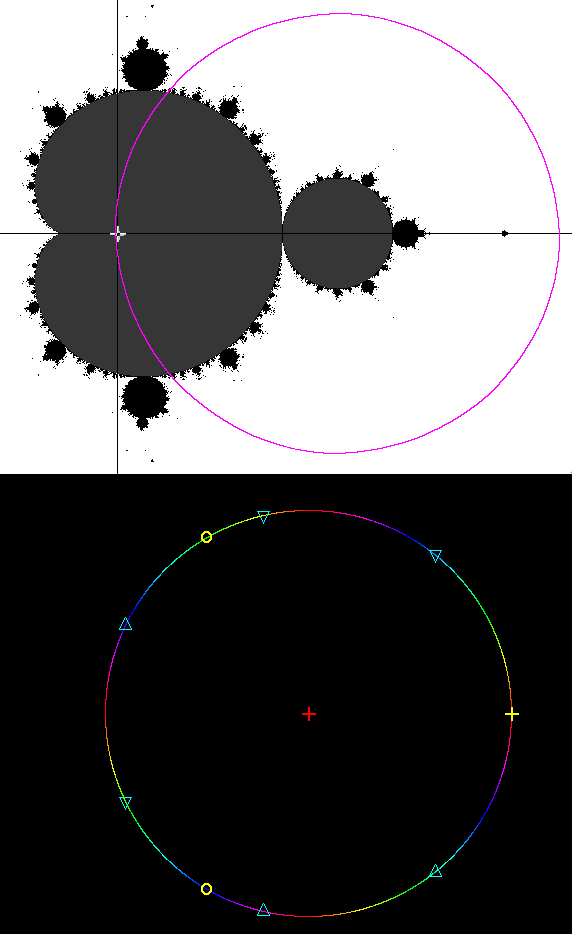
Mathematicians want to study the iteration behaviour
of complex differentiable maps
f : ℂ → ℂ
A good idea is to do this for a simple family of map z → z^2 - c where c is a constant.
For any p in the complex plane, we compute the sequence
p₁ = f(p)p₂ = f(f(p))p₃ = f(f(f(p)))if the norm of pₙ approaches infinity
(i.e. length from {0,0} to pₙ)
we say that the point p “escapes to infinity”.
The boundary of the set of points that do NOT escape to infinity is called the Julia set of the function f.
Julia set may be a continuous curve, or totally disconnected set, depending on the value of c.
There's a connection between Julia set and Mandelbrot set.
If c is in the Mandelbrot set M, then the Julia set is the image of a continuous curve. If c is outside of M, then the Julia set is a totally disconnected set.
If c is in the interior of M (that is: some small disk around c is also in M), then f has exactly one attractor to which all those points are moved to by the iteration of f, which are neither in the Julia set, nor are moved to infinity. (This set is called attractor basin of f.)
For example, if c is in the (open) cardioid belly of M, then f has an attracting fixed point.
If c is in the open circular chest of M, then f has an attracting orbit of order 2.
If c is in the two biggest (open) bulges attached to the cardioid belly, then f has an attracting orbit of period 3.
In other words, if one picks any c from the interior of M then one knows important general facts about the iteration behavior of f.
Boundary points c of M may give Julia sets without a finite attractor basin (the basin of infinity is always there).

In the first image we picked c=0, hence f(z) = z^2. Clearly, everything outside the unit circle is moved to infinity, everything inside is moved to zero. The unit circle is the Julia set and 0 is the attractive fixed point, marked by a red cross. On the unit circle is another fixed point 1 = f(1), which is expanding (yellow cross). The yellow circles (at 2pi*1/3 and 2pi*2/3) are the expanding orbit of order 2. There are two expanding orbits of order 3: namely 2pi*(1/7, 2/7, 4/7) and 2pi*(6/7, 5/7, 3/7). And more orbis of higher order.
These features persist for all c in the cardioid belly, see the second image. Surprisingly one can "dynamically parametrize" the boundary of the attractor basin (= the Julia curve) so that all the orbits on the Julia set have the same parameters as on the circle.
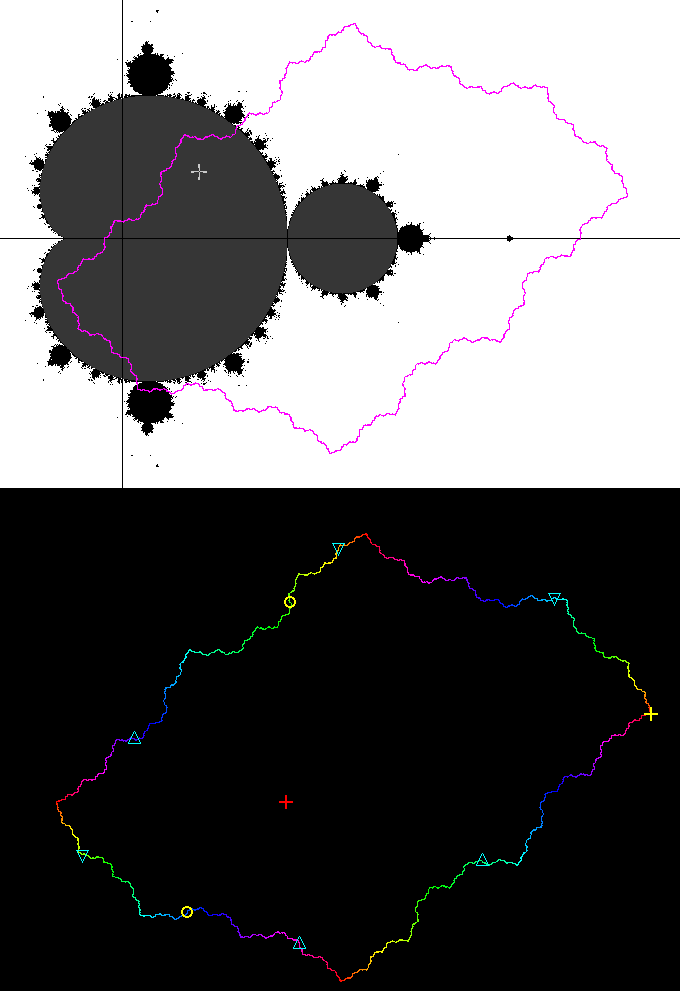
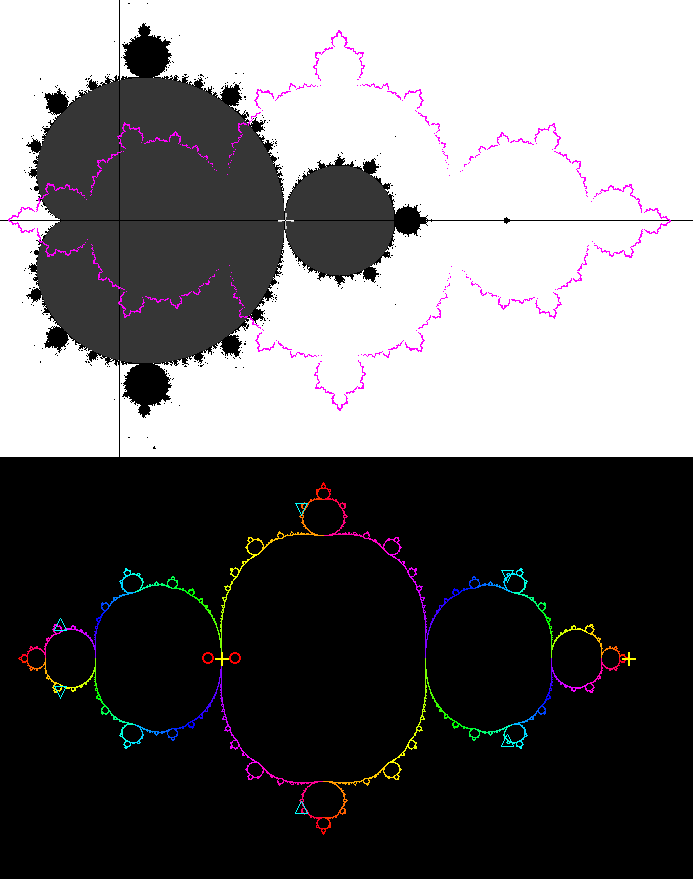
For the third image c was picked almost at the contact point between belly and chest, but inside the chest. Now the orbit of order 2 is an attractor (red circles) . Both fixed points are unstable (yellow crosses) on the Julia set. The orbits of period 3 are marked as on the circle.
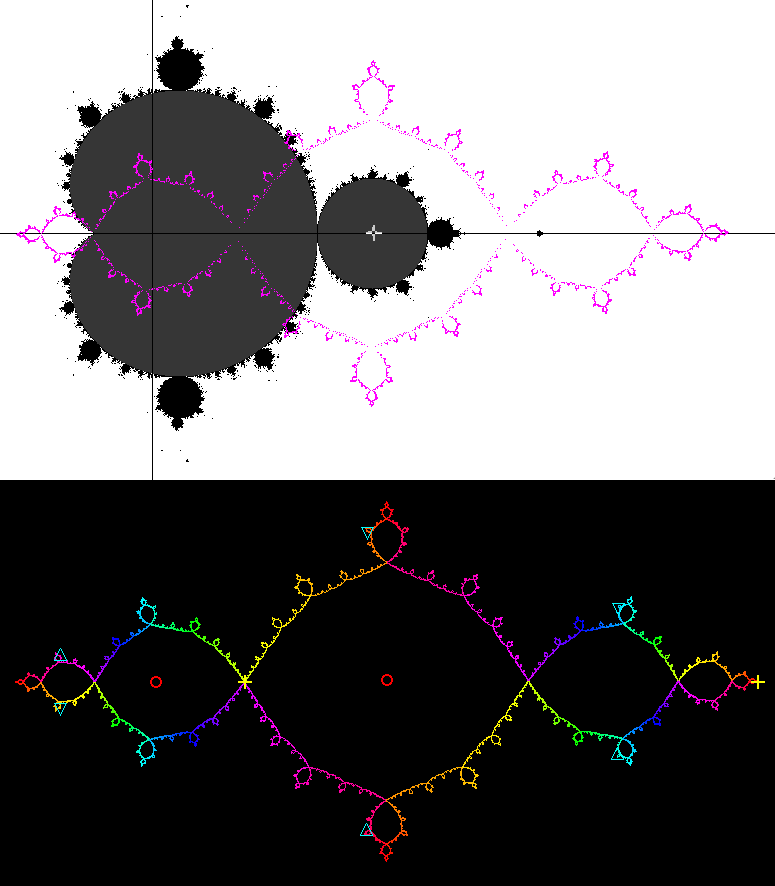
For the fourth image c is chosen from the middle of the chest. The attracting orbit of period 2 is marked by red circles. The unstable fixed points and order 3 orbits are marked on the Julia set.
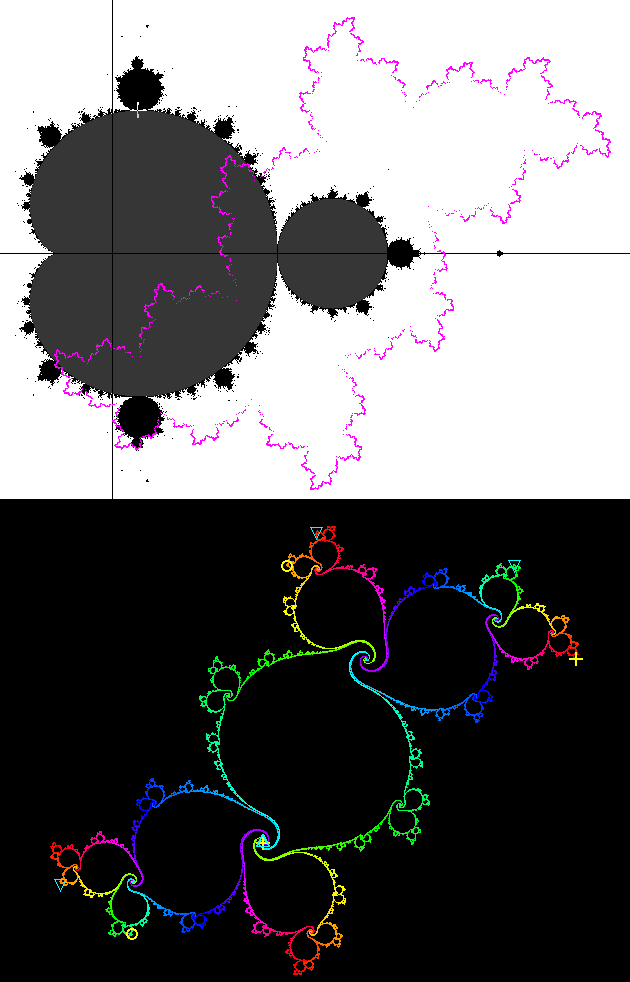
For the 5th image c is almost the contact point between the belly and one of the period 3 bulges. And for the 6th image c is from near the middle of that bulge. In both cases we have attracting orbits of period 3.
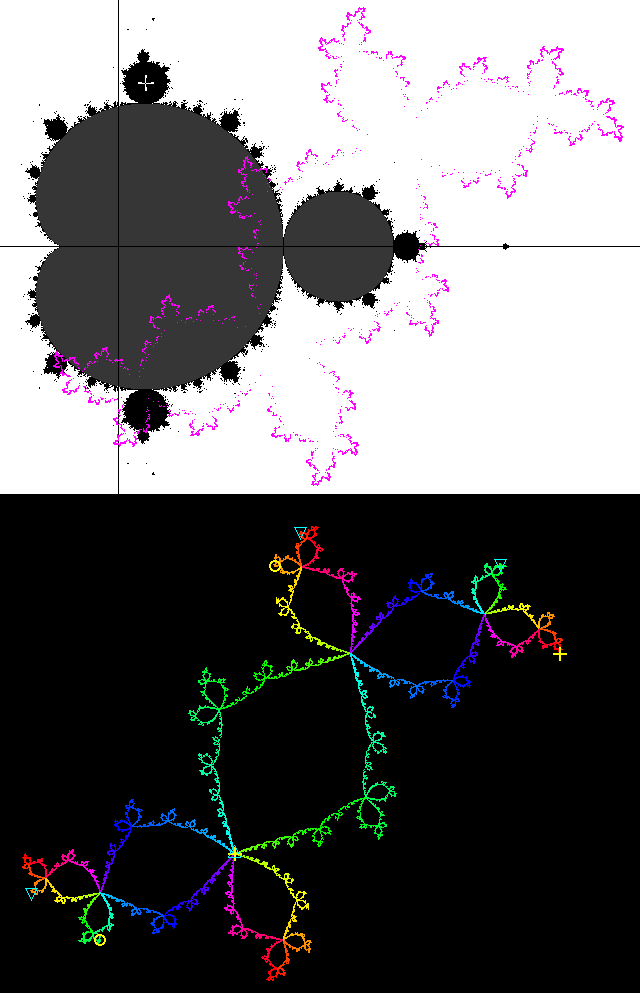
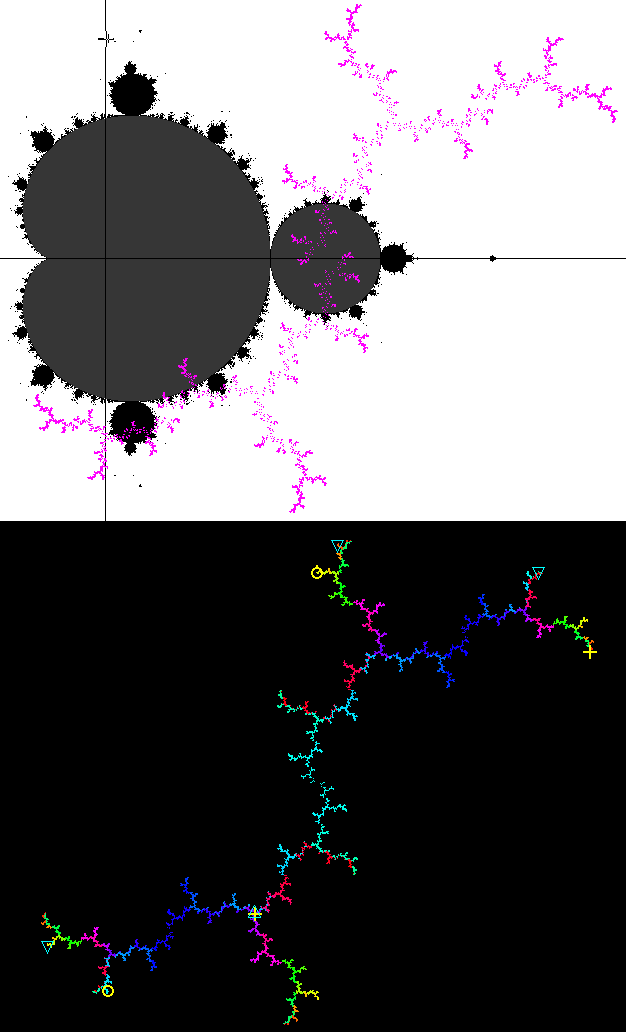
For image #7 we have c = i on the imaginary axis. i is a boundary point of M. Julia sets like this are called "dendrites". We see no attractor basin. The known periodic points are marked as before.
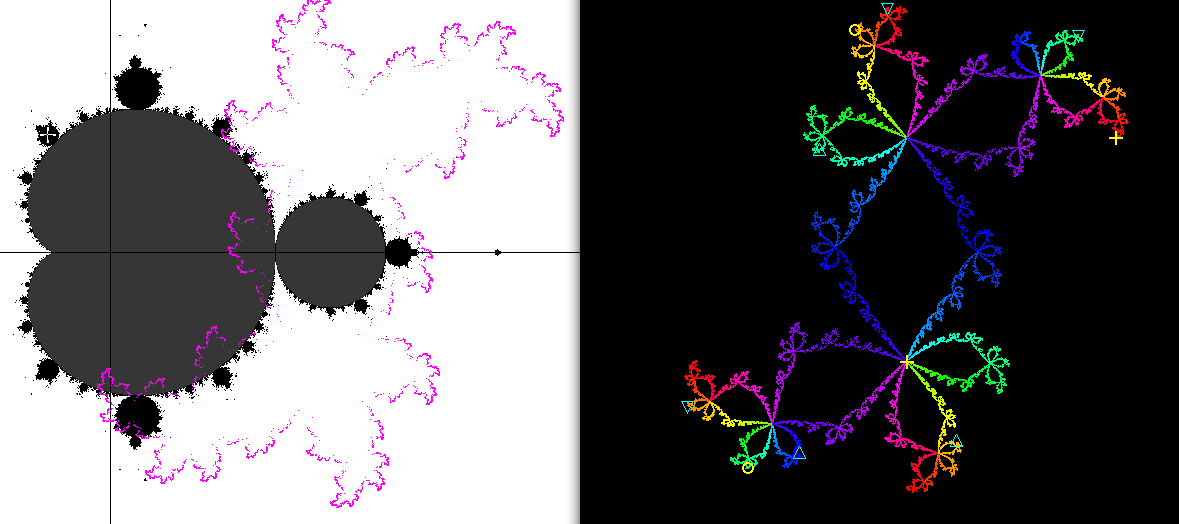
For image #8 c is from another bulge attached to the belly. For these c the map f has an attractor of period 4. Note that the coloration allows to see this set as the image of a continuous curve.
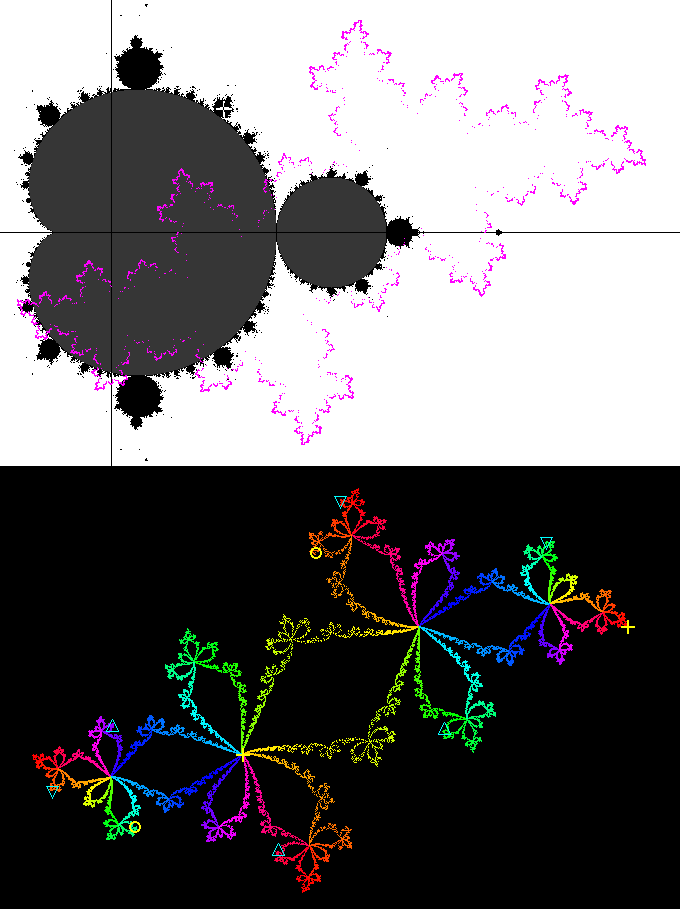
Image #9 is similar, except that c is from one of the period 5 bulges.
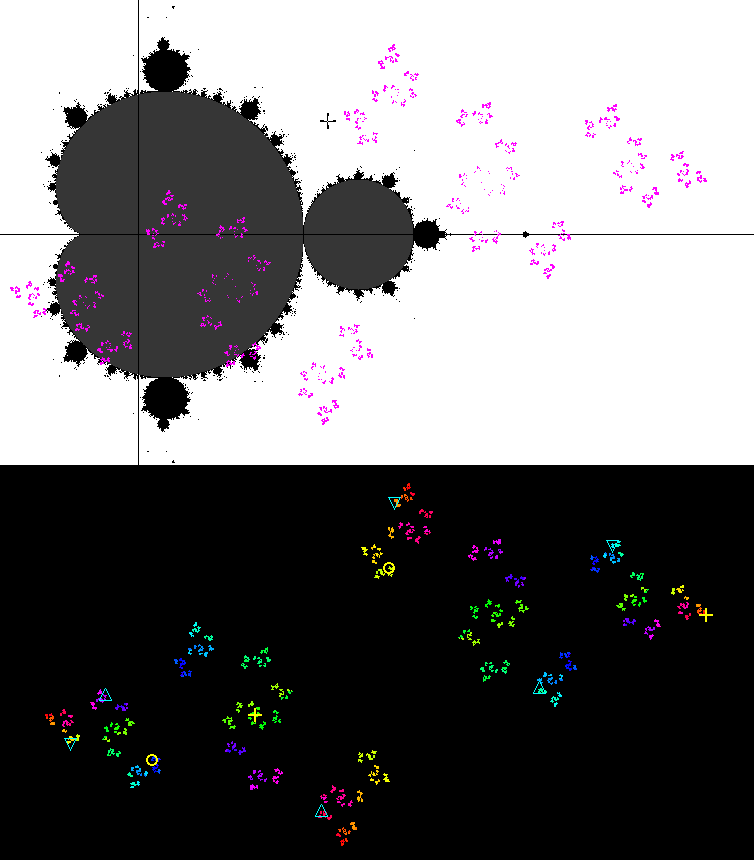
In image #10 the black cross outside the Mandelbrot set marks the choice of c. Clearly the corresponding Julia set consists of many separate pieces. In fact no two points are connected inside this set - it is "totally disconnected". Such sets are also called Cantor sets.
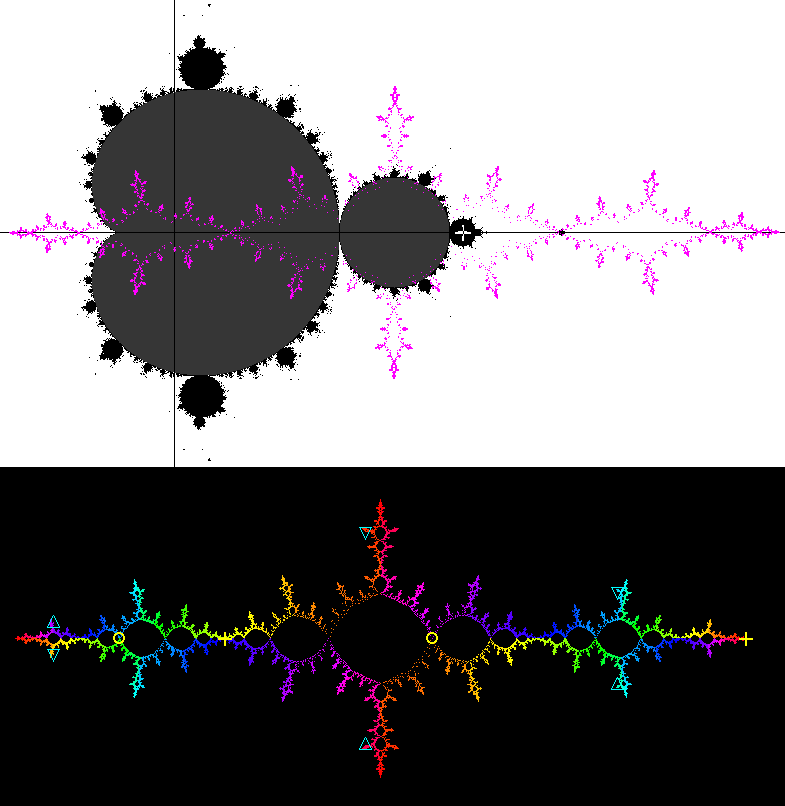
For image #11 we moved c from the period 2 chest to the head bulge. The attractor has now period 2*2.
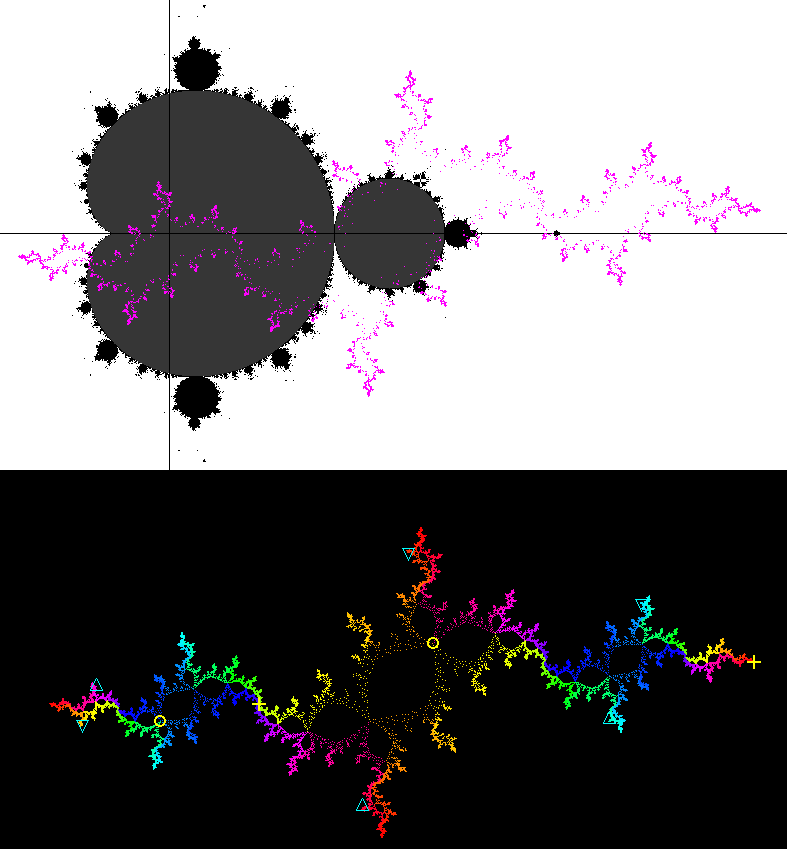
For image #12 we moved c into one of the two second biggest bulges attached to the circular chest. We find an attractor of period 2*3. Compare the shape of the attractor basin with the basin of the period 3 attractor in image #6.
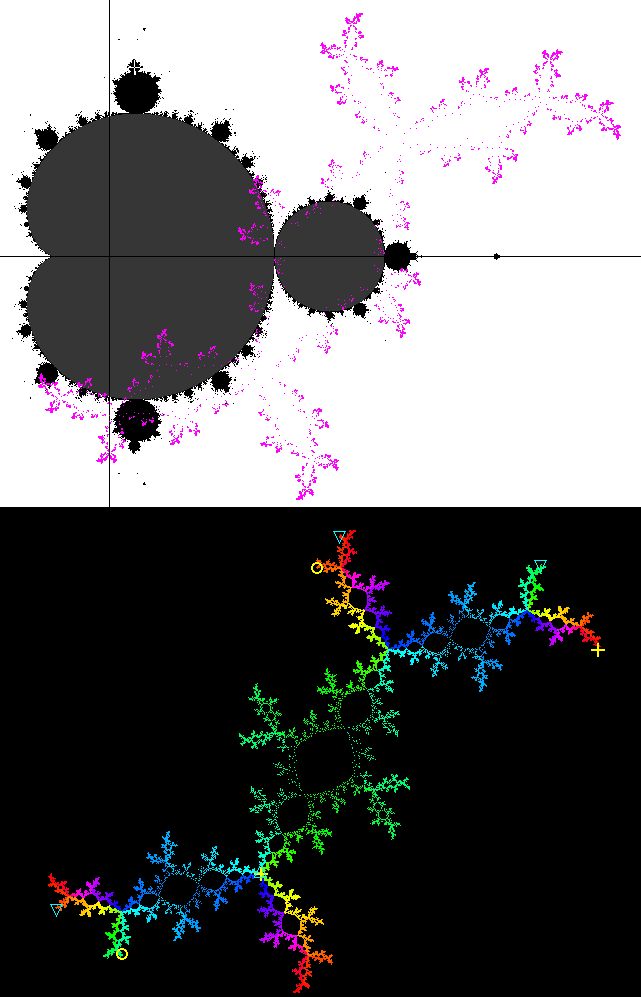
In image #13 c is moved from the period 3 bulge of the cardioid into the "head" of this bulge. We find an attractor of period 3*2. Compare thie attractor basin with the period 2 attractor in image #4!
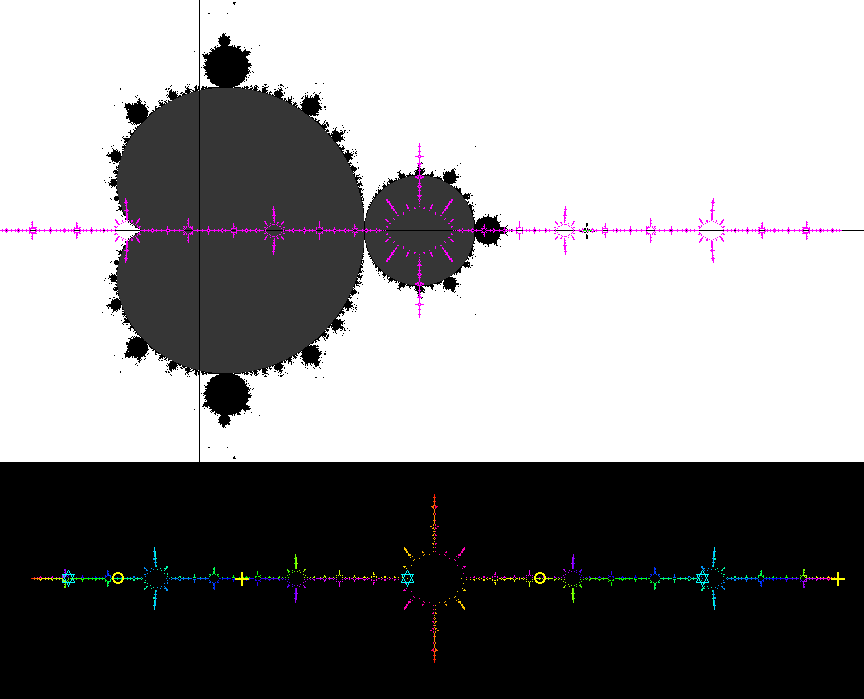
Image #14 is different from what we have seen so far. The Mandelbrot set has in the spike on his head another small Mandelbrot set. We choose c from this part of M and we find another attractor of period 3. Of course we are willing to predict, which periods we reach when we proceed into the bulges of this little Mandelbrot part of M.
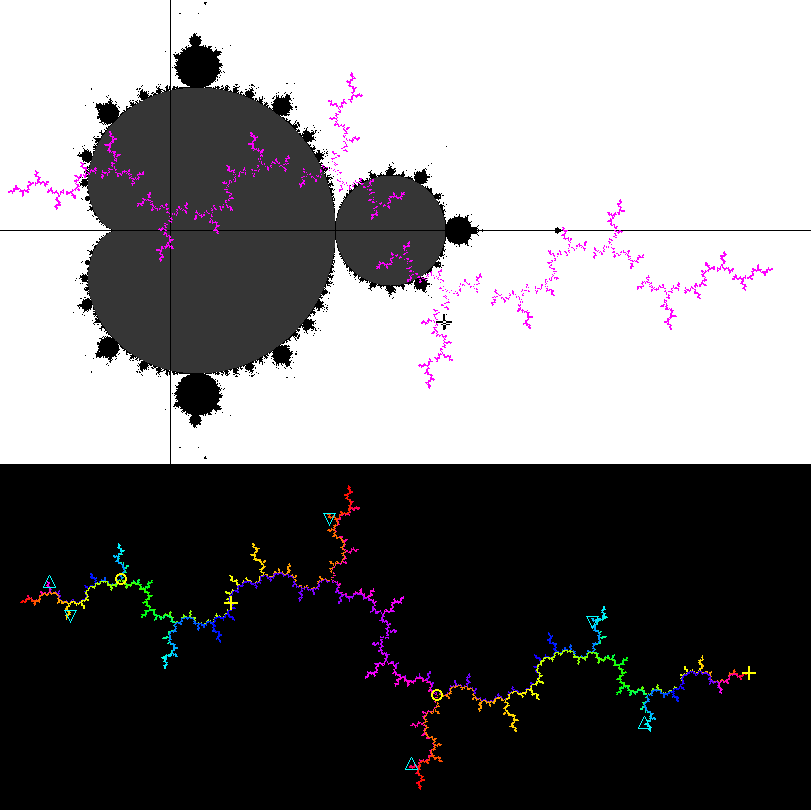
Image #15 shows another dendrit from a numerically found boundary point of the Mandelbrot set.
First, there are general cases and exceptions.
For large | c | we have almost all points of the complex plane escaping to infininity. The few remaining ones are a cantor set. We say: infinity is the only attractor, the set of points which escape to infinity are called the attractor basin of infinity. All periodic points of the map f are in the Cantor set.
For small | c | there are three kinds of points:
This simple, but incomplete, picture is made more precise and complete with the help of the Mandelbrot set:
make such general statements: For some boundary points the bounded attractor basin exists, for others only the attractor basin of infinity exists, but the Julia set is still the image of a continuous curve (for example a dendrite).